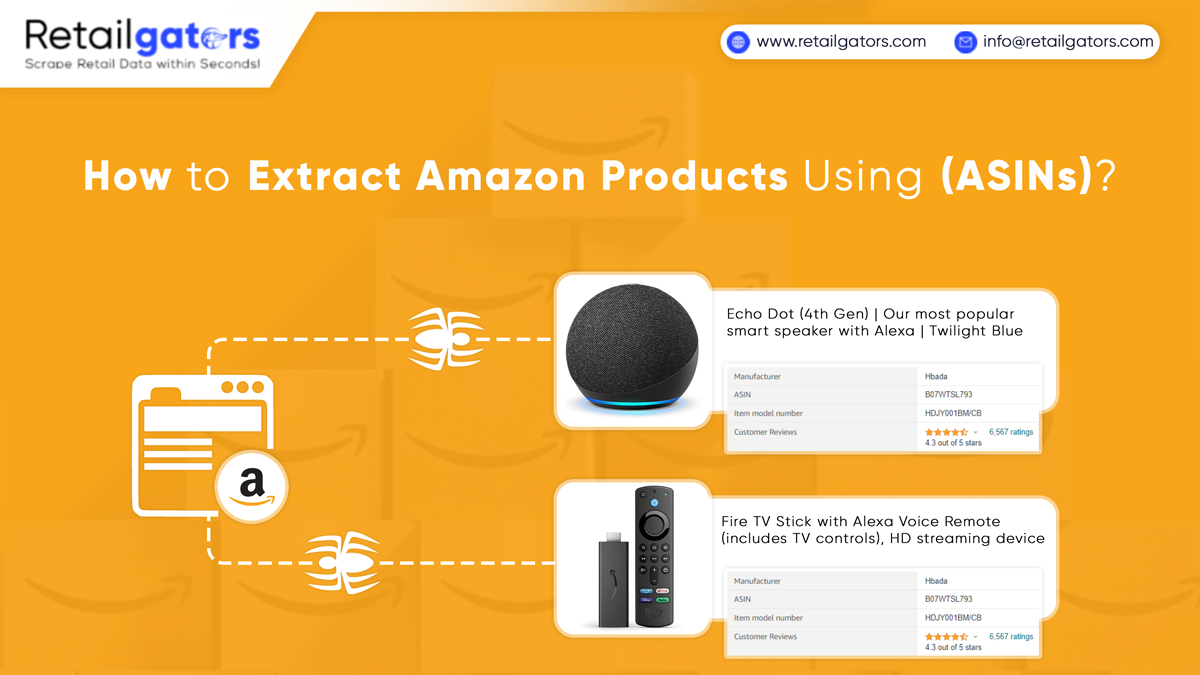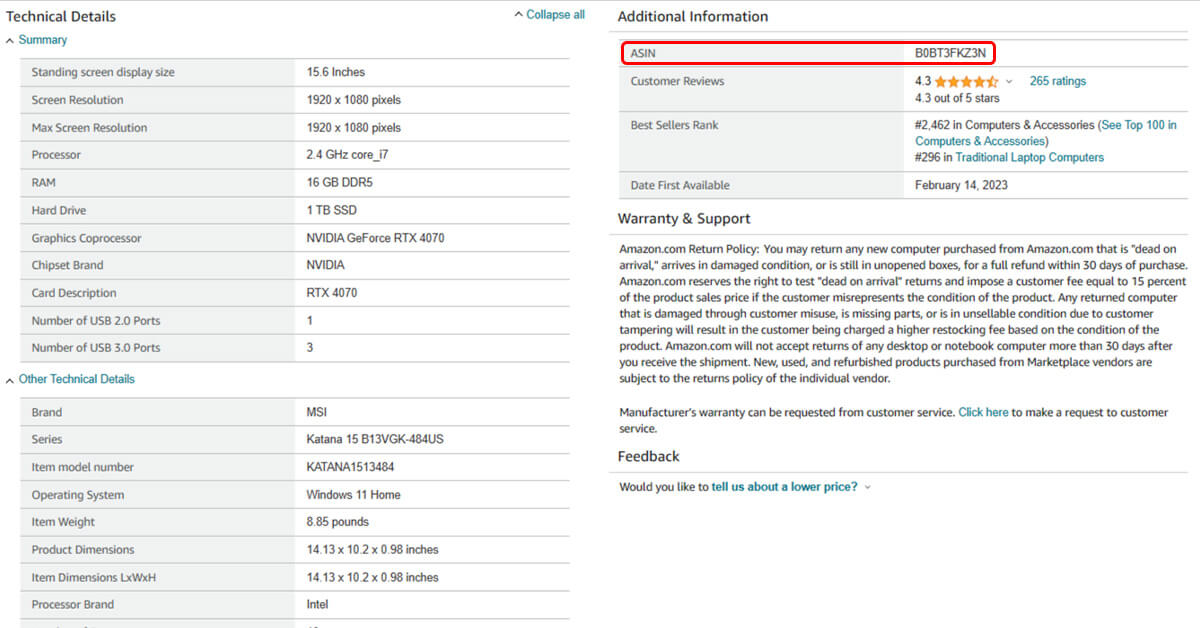
What is Amazon?
Amazon occupies the title of the largest online retailer in the world. Also, it is a leading cloud service provider. Originating as an online book- store, Amazon has matured into an internet-based conglomerate. Now, it is offering e-commerce, cloud computing, and AI services.
Amazon occupies the title of the largest online retailer in the world. Also, it is a leading cloud service provider. Originating as an online book- store, Amazon has matured into an internet-based conglomerate. Now, it is offering e-commerce, cloud computing, and AI services.
Headquartered in Seattle, Amazon’s influence extends throughout the world. The firm has established its presence throughout the world. It has achieved this via its;
- Individual websites,
- Software development centers,
- Customer service centers
- Fulfillment centers located throughout the world.
ASIN: Meaning
ASIN stands for Amazon Standard Identification Number. It is a distinct 10-character alpha-numeric code assigned by Amazon.com. It aids in the identification of a product amidst its extensive record of billions of items. This identification system serves as a tool for product recognition and categorization.
When it comes to books, the ASIN is synonymous with the ISBN. Amazon provides a continuous connection between the two. Amazon’s product catalog generates a unique ASIN for all product categories. They do it each time they add a new item.
It is vital to note that ASINs are exclusive within a specific marketplace. It means Amazon websites in different countries may use different ASINs for the same product. It reflects regional variations in their catalogs.
ASINs: Importance
Considering the perspective of the seller:
The Amazon ASIN is vital to both you and Amazon. It serves as a bedrock in various aspects of your firm. It plays a vital role in;
- Tracking your inventory,
- Functioning as a point of reference for catalog data,
- Indexing of product catalog pages for search and browsing.
With Amazon’s vast product range, the presence of ASINs is irreplaceable. It is for managing inventory and ensuring an organized catalog structure.
Considering the perspective of buyers: ASINs are a boon for buyers.
- They simplify the product search process.
- It provides an undisturbed navigation experience across many categories.
- As ISBN assists in finding a specific book edition, ASINs make purchasing desired products easy. For example, if you want to look for a particular laptop model, identifying its ASIN simplifies the search. Also, it guarantees an effortless buying journey.
What is the method for locating ASINs on Amazon?
You can find ASINs on the product listing page of the Amazon website. To locate an ASIN, customers can type the product description or ASIN into the search box.
If you are doubtful about the ASIN of a particular product, you can find it by searching the product details on the Amazon website.
Let’s prove this process with a straightforward example. Start by visiting Amazon.com and selecting a random product. Once on the website, you will find a “Shop by Category” box.
Choose the “Computers & Accessories” option.

Now, let’s assume we select the Scepter monitor, which is among Amazon’s Best Sellers. Click on the product, and take note of the URL. At the start of the URL, you will notice a 10-digit sequence that starts with the letter “B” followed by a “0”. This sequence serves as the ASIN assigned to that product.
Moreover, as you scroll down the product page, you will find the ASIN. It is displayed within the “Technical details” box.

What are the methods for extracting Amazon ASINs through web scraping?

To gather ASINs from Amazon, the recommended method is to use an Amazon ASIN scraper.
Amazon Product Scraper is available, capable of extracting various Amazon data. Still, developers have designed the Amazon ASINs Scraper for easy retrieval of ASIN data. This tool ensures a quicker and more efficient extraction process for ASINs.
1. Acquiring the ASIN
To begin extracting product data, you’ll need to get the ASIN for the item of interest.
You can find the ASIN through various methods.
Product Page: Visit the product’s page on the Amazon website. The product details section displays the ASIN. It is beneath the product title.
Product URL: On Amazon, the product URL often contains the ASIN. Look for the string of characters following “/dp/” or “/dpn/” in the URL.
Product API: For large-scale data extraction, you can use Amazon’s Product Advertising API to fetch ASINs.
2. Utilizing Web Scraping
Web scraping is an automated technique employed to retrieve data from websites. Once you have the ASIN, you can use web scraping tools or libraries to gather product data.
But, exercise caution to follow Amazon’s terms of service. Also, ensure you do not violate any restrictions.
3. Exploring Amazon Product API
Amazon provides the Product Advertising API. It enables developers to access product data from their database. By using API, you can retrieve comprehensive product details, pricing, or customer reviews. Familiarize yourself with the API documentation. Then, get an API key to integrate this functionality into your projects.
4. Employing Third-Party Tools
Third-party tools simplify the process of extraction of Amazon data. These tools often offer user-friendly interfaces. It allows you to input ASINs and receive comprehensive product data.
5. Data Analysis and Applications
Upon obtaining Amazon product data through ASINs, you can use it for diverse purposes:
Market Research:
Analyze product trends, pricing, and customer reviews. It enables us to identify market opportunities and stay ahead of competitors.
Inventory Management:
Keep track of product availability and pricing variations. It helps to optimize your inventory management strategy.
Competitor Analysis:
Compare products across different sellers and brands to understand their market positioning.
Personalized Recommendations:
Use product data to offer personalized recommendations to customers. Their preferences and browsing history form the basis for these.
By following these steps, you can gain insights. It can help you make data-driven decisions for your Amazon-related initiatives.
Is the act of scraping Amazon ASINs legal?
Gathering publicly available data from websites through scraping is permitted.
Yet, it is vital to abide by copyright and personal data laws. Also, it is vital to exercise caution to ensure that the data- sets you gather don’t contain sensitive data.
Conclusion
The process of extracting Amazon products using ASINs is a potent method. It simplifies data retrieval for sellers, researchers, and data analysts.
Through the use of specialized ASIN scraper tools, one can gather desired data. This data is from Amazon’s extensive catalog.
It is vital to rank compliance with Amazon’s Terms of Service and privacy regulations. It helps ensure ethical and lawful data extraction practices.








Leave a Reply
Your email address will not be published. Required fields are marked